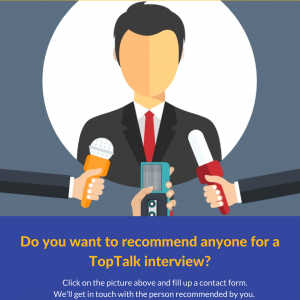 Bob Kelleher is a best-selling author, keynote speaker, and consultant and travels the globe sharing his insights on employee engagement, leadership, and workforce trends. Bob is the author of the best-selling book, LOUDER THAN WORDS: 10 Practical Employee Engagement Steps That Drive Results, CREATIVESHIP, A Novel for Evolving Leaders, EMPLOYEE ENGAGEMENT for Dummies, and the just-released I-Engage, Your Personal Engagement Roadmap.
Bob Kelleher is a best-selling author, keynote speaker, and consultant and travels the globe sharing his insights on employee engagement, leadership, and workforce trends. Bob is the author of the best-selling book, LOUDER THAN WORDS: 10 Practical Employee Engagement Steps That Drive Results, CREATIVESHIP, A Novel for Evolving Leaders, EMPLOYEE ENGAGEMENT for Dummies, and the just-released I-Engage, Your Personal Engagement Roadmap.
Bob can be seen or heard on national media (most recently on CNBC, CBS, NBC News, Business Week, Forbes, and Fortune), and is a frequent guest writer and contributing editor on many national publications.
Bob is also the founder and president of The Employee Engagement Group, a global survey, products, and consulting firm working with leadership teams to enhance their leadership and employee engagement effectiveness.
What does Employee Engagement mean to you?
Employee Engagement is actually not a ‘thing’ but an outcome. I have often stated that engagement is an outcome of a mutual commitment between an organization and an employee where the organization is helping the employee reach his/her potential, while the individual is helping the organization also be successful. This mutual commitment is what leads to ‘discretionary effort’ which is the magic dust that really drives business performance.
How to measure employee engagement?
I’m a big fan of partnering with an outside firm to conduct an employee survey to measure the pulse of engagement. Relying on leadership and or Human resources to determine employee engagement is inconclusive. If you’re going to have your annual health physical, your doctor will run blood work and other diagnostic tests in addition to his physical exam. This is what a survey provides an organization- a real-time diagnostic tool. I also suggest using an outside consultant who is trained in designing and interpreting survey results, with industry benchmarks to compare how you are performance vs your peer group. Companies that conduct their own surveys miss important industry benchmark data while risking the survey being perceived by employees as lacking confidentiality.
What are the common causes of employee disengagement?
At the individual level, it is often a dysfunctional relationship between a boss and an employee (the usual #1 cause of disengagement at the individual level). At the organization level, it is often a lack of trust with top leaders, and/or a dysfunctional communication process (line of sight is a significant engagement driver – where are we going / how are we doing / and how am I performing). Sometimes it is caused by the perception that leadership does not care about the well-being of employees.
What are the drivers of employee engagement in today’s fast-moving world?
I just gave a keynote presentation called, Empathy is the New Black. Studies show that a lack of Trust is the #1 driver of disengagement, and the number one ways leaders demonstrate trust is to show empathy and care for their employees.
What makes a really effective employee engagement programme? Any best practices to share.
Employee Engagement is not a program, and should never be considered a program. It is part of one’s culture, and includes many factors – fair and consistent rewards and recognition programs; understanding who you are and hiring people into your organization who embody the behaviors and traits of who you are; a robust, transparent, and circular communication process and culture; leaders and managers who are trained in ‘soft skills’; competitive benefits and compensation programs; training and development programs.
Commit to communicating with all employees every month from the C-Suite level, weekly at the first line level. Invest more in training and development than your peer group. Pay at the 50% level, but incentivize at the 75% or higher level (engagement is about building a culture of high performance so one needs to sure they’re truly recognizing and paying for top performance).

I not that much of a internet reader to be honest but your sites really nice, keep it up! I’ll go ahead and bookmark your website to come back later. Many thanks
Thank you so much.
I am so happy to read this. This is the kind of manual that needs to be given and not the random misinformation that’s at the other blogs. Appreciate your sharing this greatest doc.
Thanks. Keep reading.